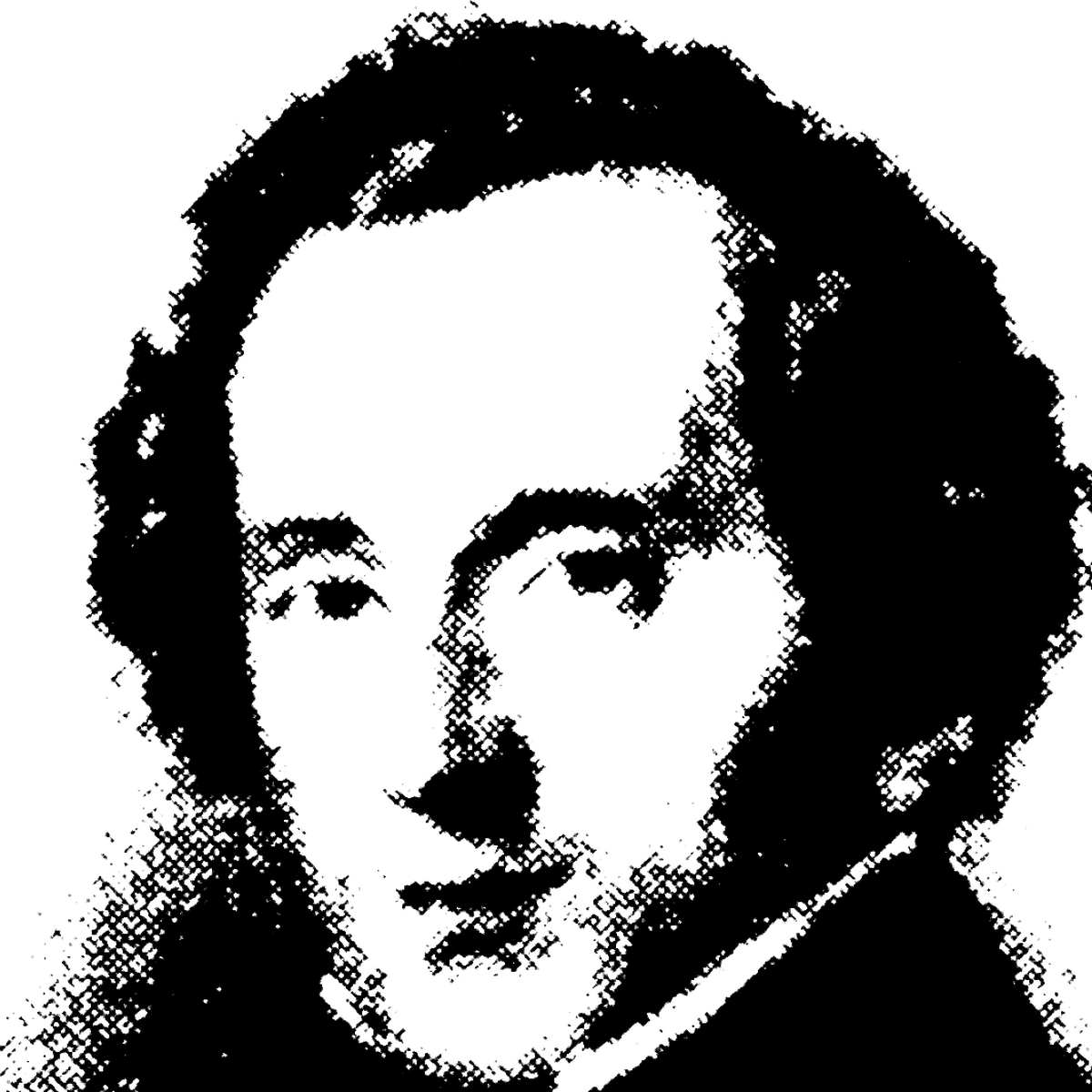Kalliwoda & Mendelssohn


programme notes
written by JASPER CROONEN
Johann Wenzel Kalliwoda Symphony No. 1 in F minor, Op. 7 (1826)
Felix Mendelssohn Symphony No. 1 in C minor, Op. 11 (1824)
[read also: who is Kalliwoda?]
[all programme notes]
-----
20.04.2024 FLAGEY
Kalliwoda & Mendelssohn: Pivotal figures between Classicism and Romanticism
‘His overtures and salon pieces are charming but ultimately rather superficial. In my view, only his early symphonies will stand the test of time.’
It was none other than Robert Schumann who expressed himself in these words in the Neue Zeitschrift für Musik about the compositions of Jan Václav Kalliwoda (1801-1866). Alas, he was wrong. For even Kalliwoda's first orchestral works were soon forgotten after the composer’s death.
And yet, the violinist and composer was a key figure in the first half of the 19th century. By the age of ten, he had begun studying at the brand-new Prague Conservatory: a diploma ‘with the compliments of the jury’, a position with the Prague Theatre Orchestra (whose director was still Carl Maria von Weber), a virtuoso career that took him across all of Western Europe… the hallmark of a successful professional musician. That image was perfectly accurate when, in 1822, Kalliwoda was appointed to the court of Prince Karl Egon II von Fürstenberg – a dynasty that endures to this day and into which the fashion designer Diane von Fürstenberg notably married.
During his forty-year career at the palace of Donaueschingen, Kalliwoda's role gradually evolved. He performed personally as a violin soloist, but also conducted the court orchestra, was responsible for the performances in the local cathedral and in the Prague Opera, which was an important epicentre that a few years earlier had played a pioneering role in popularizing Mozart’s operas. Kalliwoda also served as impresario and brought artists like Clara and Robert Schumann and Franz Liszt to the Bohemian court. And on top of that, he was also in charge of the musical education of the little princes and princesses.
It sounds unbelievable, but in addition to all that work, Kalliwoda found the time to compose. There are at least 243 opus numbers to his name, in addition to many unpublished manuscripts. In 1825, he wrote his First Symphony. Kalliwoda was barely 24 at the time, but he already displayed an astonishing maturity in his composition. The work begins with a menacing introduction, for which he used the new dynamic possibilities of the extended symphony orchestra to create great contrasts. The work was a success, and Schumann – who was not only a reviewer but a friend of Kalliwoda's – even borrowed a part of the Scherzo for his own Fourth Symphony.
The innovative elements in the work should come as no surprise. Ludwig van Beethoven’s Ninth Symphony was barely a year old at the time. Music history had taken a new turn. Romanticism made its appearance, in all its unbridled emotion, and this was something that Kalliwoda had fully understood. The music critic David Hurwitz called him a ‘mastery of melody à la Tchaikovsky’. The description gives a good idea of the grandeur and ambition of these compositions. ‘The symphonic music of Kalliwoda is thrilling,’ Hurwitz added, ‘and anticipates or echoes much of (later) 19th-century music – from Berlioz to Dvořák to Wagner and even Sibelius.’
But at the same time, Kalliwoda was also the child of his time. The volcanic force of Romanticism was certainly rumbling, but had not yet truly erupted. Despite his orchestral innovations, Kalliwoda remained true to the principles of Classicism: a prototypical structure, a classical development of the melodic material and a strict mastery of counterpoint.
This made Kalliwoda an interesting missing link between the two periods. Between the symphonic heights of Beethoven and the emotional charge of Schumann. ‘He is an exciting case study of all the problems that composers of his era struggled with,’ Hurwitz concluded. ‘How can you reconcile the ideals of 18th-century writing with a blossoming Romantic soul?’ You can hear an answer to that question in Kalliwoda's music.
Further to the extreme
‘The Mozart of the nineteenth century.’
‘A prophet of a glorious future.’
Music is not an exact science. A question can have several answers. Felix Mendelssohn was proof of that. He, too, started young as a musician and creator. He, too, was a child of his time, struggling with the turbulent waters of musical composition of his era. He, too, was reviewed by Robert Schumann – albeit less critically than Kalliwoda had been.
With all these parallels between the two men; it is probably not surprising that Mendelssohn’s career path took the same direction. He, too, achieved a (logical) merger between the musical language he grew up in and the new sonority that surrounded him. But Mendelssohn went farther to the extreme than his Bohemian colleague. Where Kalliwoda based himself on Classicism, Mendelssohn looked farther back in time. ‘His careful study of the music of Bach likely explains the characteristic love of counterpoint and complex chromatic scores,’ according to the musicologist R. Larry Todd. Mendelssohn would devote himself to writing fugues and canons at a time when other composers had just begun to set aside these strict forms. His contemporary, Hector Berlioz, said with some disdain, that Mendelssohn had perhaps studied the music of the dead too closely – although Berlioz had also declared that there is only one God, Bach, and Mendelssohn is his prophet.
Yet it is too easy to dismiss Mendelssohn as a conservative. He listened with an open mind to his late Classical contemporaries, to Beethoven and Weber, and with age he allowed himself increasingly to be seduced by Romantic ideas. The programmatic titles of his later ‘Italian’ and ‘Scottish’ symphonies or his music inspired by literary works, such as Die erste Walpurgisnacht and A Midsummer Night's Dream, are notable examples.
The core of all these ideas is in fact to be found in Mendelssohn’s First Symphony. A stormy opening that seems to come straight out of Der Freischütz, a minuet in the style of the late Mozart, but at the same time counterpoint that is based on the Renaissance style of Giovanni Pierluigi da Palestrina. A reviewer who attended the première summed it up as follows: ‘Fertility of invention and novelty of effect are what first strike the hearers of Mendelssohn’s symphony; but at the same time, the melodiousness of its subjects, the vigour with which these are supported, the gracefulness of the slow movement, the playfulness of some parts, and the energy of others, are all felt.’
It is clear that both Kalliwoda and Mendelssohn worked at a pivotal period in history. In that transitional era, they were mainly the first symptoms of a new generation, rather than the final convulsions of a former glory. Because they had fallen somewhat between two chairs, they are not always given the honour they are due. But fortunately, there was always Schumann:
